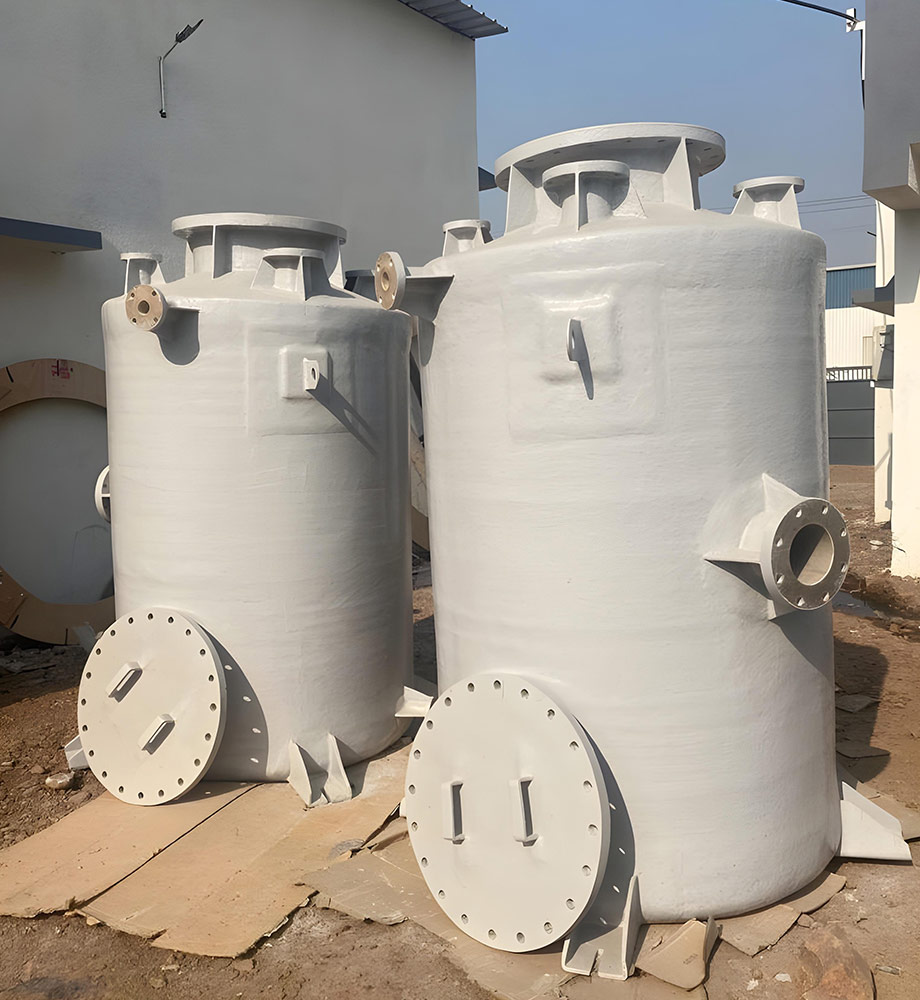Key Features
- Dual Laminate Construction: Inner thermoplastic liner fully encapsulated by FRP for strength.
- Broad Chemical Compatibility: Liners available in PTFE, PP, PVC, ECTFE, etc., to suit acids, bases, solvents and ultrapure water.
- Leak-Proof Welds: Welded thermoplastic seams and corners ensure no leakage of corrosive media.
- Durable FRP Shell: Provides pressure/vacuum resistance and mechanical support.
- Smooth, Non-Porous Liner: Prevents adhesion of chemicals or bacteria for hygienic applications.
Benefits
- Ultimate Corrosion Resistance: Handles the most aggressive chemicals without degradation.
- Clean Operation: No reaction between lining and contents; ideal for ultrapure or food-grade liquids.
- Extended Tank Life: Thermoplastic liner protects the FRP shell from chemical attack, extending service life.
- Customized Chemistry: Engineers can select liner material to match specific process fluids.
- Minimal Maintenance: Liners are inert and durable; internal FRP no longer exposed to chemicals.
Applications
- Storage of acids (e.g. sulfuric, hydrochloric) and alkalis (e.g. caustic lye) in chemical plants.
- Pickling and plating tanks in metal finishing (acid/alkali baths).
- Demineralized/potable water in pharmaceutical or semiconductor industry.
- Ultra-pure water and reagent tanks in laboratories.
- Corrosive wastewater holding and equalization.
Technical Specifications
- Liner Materials: PP, PVC, CPVC, PVDF, ECTFE, PTFE, FEP (thickness typically 3–6 mm).
- FRP Exterior: Vinylester or epoxy resin for added corrosion protection.
- Pressure Rating: Usually low-pressure (atmospheric to ~1 bar); design per ASME RTP-1 or custom codes.
- Temperatures: Depends on liner (e.g. PVC to 60°C, PVDF to 80°C, PTFE up to 150°C).
- Manufacture: Liner fabricated to shape, tested, then FRP layers applied via hand lay-up or filament winding.
Unique Selling Points (USPs)
- Versatility: One tank can handle both mechanical load and extreme chemistry.
- Odor-Free: Liners produce no taint or odor in contents.
- Regulatory Compliance: Materials selected for compliance with FDA, NSF or EU standards for clean water.
- Cost Savings: Cheaper than exotic alloy tanks for same resistance.
- Adaptable Designs: Liners can be field-welded to unusual shapes or existing tanks for upgrades.

